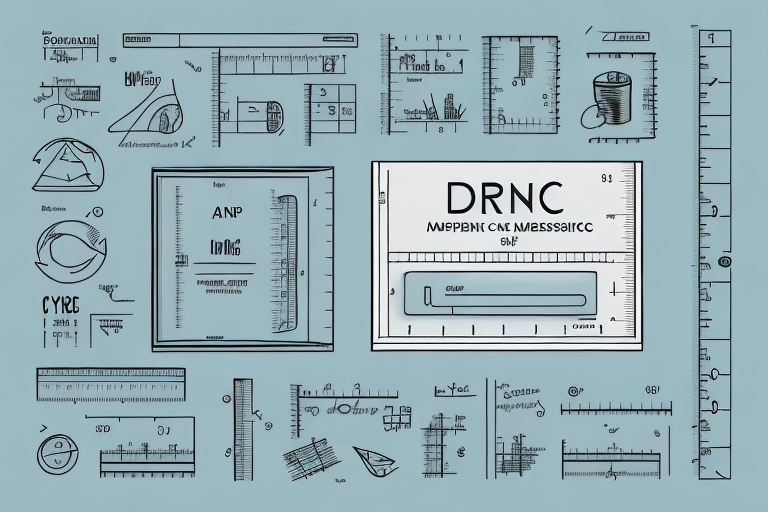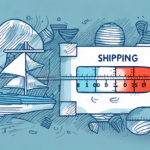Importance of Accurate Package Dimensions
In the competitive world of shipping and logistics, precise package dimensions are critical for several reasons. Accurate measurements not only influence shipping costs but also play a pivotal role in ensuring the safety and integrity of the products during transit. Understanding and optimizing package dimensions can lead to significant cost savings, enhanced customer satisfaction, and streamlined operational efficiency.
Cost Implications of Package Size
The dimensions of a package directly impact the shipping costs. Major carriers like UPS and FedEx utilize a dimensional pricing model that factors in both the weight and size of the package. This means that a larger, lightweight package could incur higher shipping fees compared to a smaller, heavier one. Additionally, oversized or non-standard packages may attract extra surcharges, making accurate measurements essential to avoid unexpected expenses.
Ensuring Product Safety During Transit
Properly sized packages are less likely to experience movement or damage during transportation. Overly large packages can lead to shifting contents, while insufficient packaging may not provide adequate protection, increasing the risk of product damage. By accurately measuring and appropriately packaging goods, businesses can minimize the chances of returns and maintain customer trust.
How to Measure Package Dimensions Correctly
Essential Tools for Accurate Measurement
Accurate measurement of package dimensions requires the right tools and techniques. A reliable measuring tape or ruler is fundamental, but for higher precision, digital measuring tools such as laser distance meters can be employed. Ensuring the use of accurate measuring instruments helps in obtaining precise length, width, and height measurements.
Step-by-Step Measurement Process
- Measure Length, Width, and Height: Place the package on a flat surface and measure the longest side (length), the side perpendicular to length (width), and the height from the base to the top.
- Include Protrusions: Account for any extended parts like handles, spouts, or corners that could affect the overall size.
- Round Up Measurements: To avoid underestimation, round up each measurement to the nearest inch or centimeter.
- Consider Packaging Material: Measure the package with all packaging materials included to ensure accuracy.
Impact of Package Dimensions on Shipping Costs
Dimensional Weight Pricing
Dimensional weight, or DIM weight, is a pricing technique that factors in the volume of a package relative to its actual weight. For example, a large box with minimal weight may be charged based on its size rather than its weight. Understanding DIM weight is crucial for businesses to anticipate shipping expenses accurately.
Strategies to Optimize Shipping Costs
- Use Efficient Packaging: Selecting packaging that snugly fits the product reduces unnecessary space, lowering DIM weight and shipping costs.
- Standardize Package Sizes: Utilizing standard box sizes can take advantage of lower shipping rates offered by carriers for specific dimensions.
- Implement Packaging Software: Advanced software solutions can calculate the most cost-effective packaging dimensions for various products.
According to a report by Carrier Benchmarking Insights, optimizing package dimensions can lead to a reduction in shipping costs by up to 15% annually.
Types of Package Dimensions
Internal vs. External Dimensions
Internal Dimensions: These refer to the usable space inside the package, crucial for determining how much product can be packed securely.
External Dimensions: These are the total measurements of the package, including all sides and any protruding elements, important for shipping and handling.
Minimum Thickness Requirements
Different carriers have specific minimum thickness requirements for packaging materials to ensure durability during transit. For instance, FDA regulations may dictate packaging standards for certain products to maintain safety and compliance.
Common Measurement Mistakes to Avoid
Neglecting Protruding Features
Failing to account for handles, corners, or other protrusions can lead to inaccurate package dimensions, resulting in unexpected shipping costs or delays. Always include these features in your measurements to ensure precision.
Using Inaccurate Measuring Tools
Utilizing defective or inappropriate measuring instruments can compromise the accuracy of your measurements. Regularly calibrate your tools and use those suitable for the package sizes you handle.
Incorrect Measurement Techniques
Measuring packages when they are compressed or not fully assembled can distort dimensions. Ensure packages are measured in their final, assembled state to achieve accurate results.
Optimizing Packaging for Efficiency and Sustainability
Reducing Empty Space
- Use Appropriate Fillers: Materials like bubble wrap or air pillows can secure products without adding unnecessary bulk.
- Design Custom Packaging: Tailoring packaging to fit products precisely minimizes empty space and material usage.
Choosing Sustainable Materials
Adopting eco-friendly packaging materials not only reduces environmental impact but can also enhance brand reputation. Options include biodegradable plastics, recycled cardboard, and reusable containers.
Implementing Packaging Optimization Software
Advanced software solutions analyze product dimensions and shipping routes to recommend the most efficient packaging methods. Tools like Packsize offer customizable packaging solutions that adapt to various product sizes, reducing waste and lowering shipping costs.
Future Trends in Packaging Design
Biodegradable and Compostable Materials
The shift towards sustainability is driving innovation in packaging materials. Biodegradable and compostable options are becoming increasingly popular as businesses seek to reduce their environmental footprint.
Reusable and Collapsible Designs
Reusable packaging solutions, such as collapsible containers, offer flexibility and sustainability. These designs can be repurposed by consumers, extending their lifecycle beyond initial use and reducing waste.
Smart Packaging Technologies
Incorporating technology into packaging, such as QR codes and RFID tags, enhances tracking and inventory management. These smart solutions provide real-time data on package locations and conditions, improving overall logistics efficiency.
As the packaging industry continues to evolve, businesses must stay informed about the latest trends and technologies to maintain competitiveness and meet the growing demands for sustainability and efficiency.
Conclusion
Accurate measurement and optimization of package dimensions are fundamental to successful shipping and logistics operations. By understanding the implications of package size on costs, safety, and sustainability, businesses can implement strategies that enhance efficiency and reduce expenses. Investing in the right tools, adopting sustainable practices, and staying abreast of industry trends will position companies to thrive in an increasingly competitive market.






















